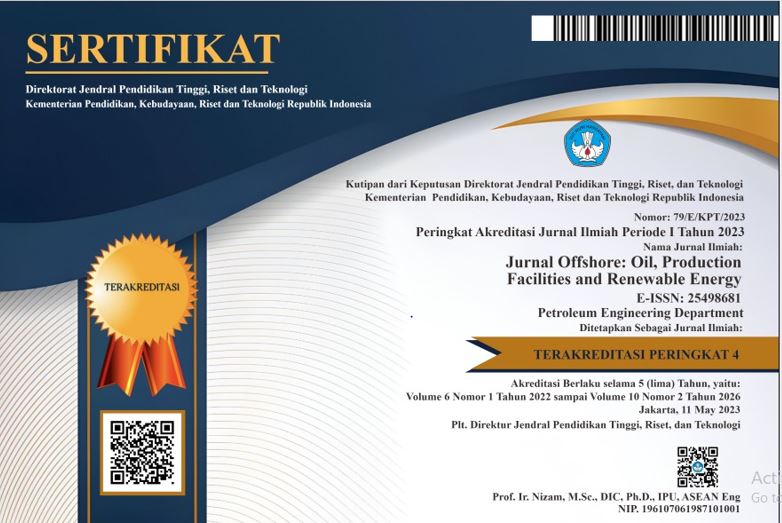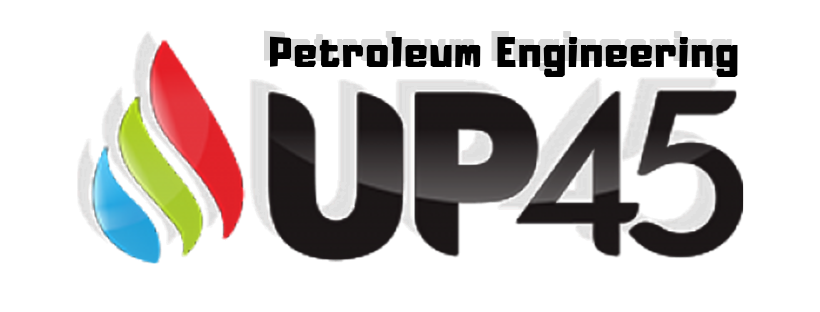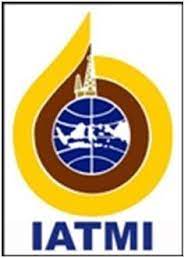Studi Kualitas Batuan Reservoar Formasi Kalibiuk Daerah Purbalingga Sub Cekungan Banyumas
(1) UPN “Veteran” Yogyakarta
(2) UPN “Veteran” Yogyakarta
(3) UPN “Veteran” Yogyakarta
(*) Corresponding Author
Abstract
Abstrak
Salah satu unsur penting dari sistem minyak dan gas bumi (petroleum system) adalah reservoar, yaitu batuan dengan porositas dan permeabilitas yang baik sehingga mempunyai kapasitas penyimpanan dan kemampuan untuk mengalirkan fluida (minyak dan gas bumi). Kualitas reservoar pada umumnya dipengaruhi oleh karakter fisik batuannya yang meliputi: tekstur, struktur sedimen, dan proses diagenesa yang terjadi. Penelitian ini ditujukan untuk mengetahui kualitas batuan reservoar di Daerah Purbalingga, Provinsi Jawa Tengah. Daerah penelitian merupakan bagian dari Sub-Cekungan Banyumas yang telah terbukti memiliki potensi kandungan migas.. Fokus penelitian ini pada Formasi Kalibiuk yang tersusun oleh batupasir gampingan dengan sisipan tipis batulempung gampingan, batupasir dan batupasir kerikilan. Uji kualitas batuan reservoar tersebut dilakukan pada 10 sampel dan difokuskan pada uji sifat fisik batuan, yaitu porositas dan permeabilitas. Dalam penelitian ini pengujian porositas menggunakan dua metode, yaitu pengamatan petrografis dan penimbangan, sedangkan pengujian permeabilitas menggunakan alat permeameter gas. Dari hasil pengujian didapatkan kualitas reservoar batupasir Kalibiuk dengan porositas teramati (petrografis) berkisar dari 9,50% (buruk) - 16,80% (baik), porositas terukur (timbangan) berkisar dari 3,26% (dapat diabaikan) - 20,20% (sangat baik) dengan permeabilitas bervariasi dari 8,71 mD (cukup) - 66,59 mD (baik). Berdasarkan porositas dan permeabilitasnya, kualitas reservoar batupasir Formasi Kalibiuk dapat dikategorikan menjadi sangat baik, baik, cukup, dan buruk. Perbedaan kualitas reservoar tersebut disebabkan karena perbedaan proses pengendapannya yang tercermin pada karakteristik tekstur dan struktur sedimennya.
Kata kunci: Kualitas Reservoar, Proses Sedimentasi, Formasi Kalibiuk
Abstrack
One of the important elements of an oil and gas system (petroleum system) is a reservoir, which is rock with good porosity and permeability so that it has storage capacity and the ability to drain fluids (oil and gas). Reservoir quality is generally influenced by the physical character of the rock which includes: texture, sedimentary structure, and the diagenetic processes that occur. This study was aimed to determine the quality of reservoir rocks in the Purbalingga area, Central Java province. The research area is part of the Banyumas Sub-Basin which has been proven to have oil and gas potential. The focus of this research is on the Kalibiuk Formation which is composed of calcareous sandstone with thin insertions of calcareous claystone, sandstone and gravel sandstone. The reservoir rock quality test was carried out on 10 samples and focused on testing the physical properties of the rock, there are porosity and permeability. In this study, the porosity test used two methods, there are petrographic observation and weighing, the permeability test used a gas permeameter. From the test results, the quality of the Kalibiuk sandstone reservoir with observed porosity (petrographic) ranges from 9.50% (poor) - 16.80% (good), the measured porosity (scales) ranges from 3.26% (negligible) - 20, 20% (very good) with varying permeability from 8.71 mD (fair) - 66.59 mD (good). Based on the porosity and permeability, the sandstone reservoir quality of the Kalibiuk Formation can be categorized into very good, good, moderate, and poor. The difference in reservoir quality is due to differences in the deposition process which is reflected in the characteristics of the texture and structure of the sediment.
Keyword: Reservoir Quality, Sedimentary Process, Kalibiuk FormationKeywords
Full Text:
PDFReferences
Asikin, S., Handoyo,A., Prastistho, B., Gafour, S., 1992. Peta Geologi Lembar Banyumas Jawa, Skala 1:100.000, Pusat Penelitian dan Pengembangan Geologi, Bandung.
Djuri. M,. Samodra,H., Amin, T.C., dan Gafour.S., 1996. Peta Geologi Lembar Purwokerto, Jawa, Skala 1:100.00, Pusat Penelitian dan Pengembangan Geologi, Bandung.
Klinkenberg, L.J. 1941. The Permeability of Porous Media to Liquids and Gases, Drilling and Production Practice. American Petroleum Institute. Hal 200 –213.
Koesoemadinata, R.P. 1980. Geologi Minyak dan Gasbumi. Edisi Kedua, Jilid 1. Bandung: Penerbit ITB. Hal. 79 – 89.
Pettijohn, F.J. 1975. Sedimentary Rocks. Third Edition. New York: Harper & Row, Publishers. Hal. 1 – 13.
Selley, R.C. 1985. Elements of Petroleum Geology. New York: W. H. Freeman and Company. Hal. 219 – 231.
Williams, H., Turner, F.J., Gilbert, C.M. 1982. Petrography. An Introduction to the Study of Rocks in Thin Sections. Second Edition. W.H. San Fransisco: Freeman and Company. 626 hal.
Walker, Roger G., James, Noel P., 1992. Facies Models Response To Sea Level Change, Geological Association of Canada, Canada, Hal. 219 – 238.
DOI: https://doi.org/10.30588/jo.v6i2.1303
Article Metrics
Abstract view : 196 timesPDF - 42 times
Refbacks
- There are currently no refbacks.
Copyright (c) 2023 Sugeng Widada, Aga Rizky, Alden Sinai Yudono

This work is licensed under a Creative Commons Attribution 4.0 International License.




.jpg)










.png)